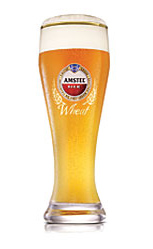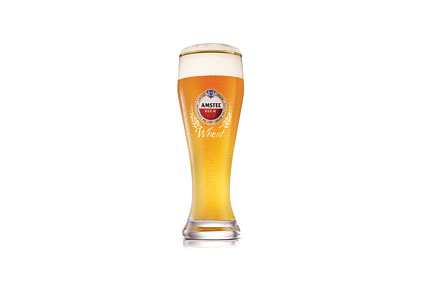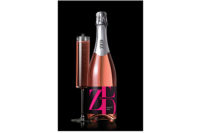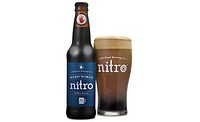
|
| After launching Amstel Wheat Bier in select cities last fall, Heineken USA will expand the beer’s distribution throughout 2012 and launch it in bottles this fall, it says |
Although it’s true that “there’s no place like home,” the on-premise segment strives to offer consumers something they cannot get at home, whether it’s the environment, the service or the drinks. The economic downturn has made it more difficult for restaurants, bars and nightclubs to coerce consumers out of their homes, but analysts see a slow return to growth.
According to Chicago-based Technomic Inc., overall consumer expenditures on alcohol away from the home will increase 2.4 percent this year. The restaurant industry also is experiencing positive growth, reports the National Restaurant Association (NRA), Washington, D.C. Total restaurant industry sales are expected to reach a record high of $632 billion this year, which is a 3.5 percent increase compared to 2011, the NRA says. In fact, the Beer Institute, Washington, D.C., reports that beer sales in restaurants rose more than 9 percent in 2011, totaling about $23.6 billion in sales. Restaurants represented the largest share of on-premise sales last year, encompassing nearly 24 percent of total beer sales, according to Beer Institute statistics.
Technomic is most optimistic about hotels, forecasting the segment to grow approximately 5.4 percent this year; it expects alcohol sales within hotels to be slightly higher, says David Henkes, vice president of the company. Fine dining and casual dining both will grow approximately 3 percent this year; however, opportunities also are available in limited-service and fast-casual restaurants, he says. In 2010, 25 limited-service chains out of the Top 500 chains served alcohol, Henkes notes. Chains including Starbucks, White Castle, Sonic and Burger King serve alcohol in select locations, which might prove to be a bigger trend moving forward, he says.
The bar and nightclub segment, however, grew only 1.7 percent in 2011, Henkes said in a statement. However, a Technomic survey of the Top 100 bars and nightclubs in the country revealed that 70 percent of venue operators on the list experienced revenue growth in 2011, with nearly half reporting increases exceeding 10 percent.
“Although the economy and the industry did show signs of recovery last year, these venues obviously excelled at concept innovation and operational execution, as well as promotion, which enabled them to experience such exceptional growth,” Henkes said in a statement.
Overall, volume in the on-premise segment has dramatically declined in the last two to three years, according to Henkes. Beer, wine and spirits have declined approx-imately 3.1 percent, 4.7 percent and 2.2 percent, respectively, he says. The channel is starting to come back, experiencing slight growth in 2011. High-end restaurants, bars and nightclubs continue to perform well, he says.
Prior to the recession, on-premise was growing about five times faster than off-premise, says Mike Ginley, partner at NextLevel Marketing LLC, Westport, Conn. In 2008 and 2009, consumers began tightening their belts by going out to eat less frequently. Now as the economy improves, consumers are going back to their old ways, in turn increasing growth in on-premise locations, he says.
However, through the recession one generation has not stopped going out: millennials. This younger demographic has more disposable income and going out is part of their lifestyle because many millennials do not have the home environment in which to entertain, Ginley explains. This created more of a challenge for restaurants than bars and nightclubs, he says.
Although the on-premise segment is not as successful as it used to be, it’s still important for beverage-makers, Technomic’s Henkes says.
“On-premise right now is about a quarter of all volume, so if you’re talking to suppliers it represents probably about 24 percent of their volume, but from a dollar perspective of what consumers spend, it’s pretty much 50/50,” he says. “We always try to play up to our supplier clients that on-premise is strategically important for brand building, for trial, for experimentation, and from a consumer perspective they’re spending just as much of their money on alcohol in the on-premise channel as they are at home.”
The price is right
Nevertheless, consumer confidence remains low, leading operators to provide promotional programs, value offerings and creative drinks to draw in customers.
Initially, operators used deep discounts to attract customers, NextLevel Marketing’s Ginley says. These kinds of discounting programs included meal offers — such as an appetizer to share, two entrees and a dessert to share for $19.99 — and extended into alcohol in the form of $1 draft beers and $2 margaritas, for example. But deep discounting cannot last forever, he says.
“What beverage is all about is really better ingredients make better-tasting drinks, and consumers are willing to pay more for them and trade up to them,” Ginley says. “If we got stuck in a promotional rut where everyone was conditioned to have $3 cocktails and $1 beers, it would probably not be a good development for the beverage alcohol industry.”
Fortunately, Ginley notes that operators have moved away from deep discounting and started offering higher quality drinks at an everyday value price — about a $5 price point — with trade-up opportunities. For instance, Outback Steakhouse offers a $3.50 Gold Coast Margarita; Ruby Tuesday has $5 everyday value cocktails, which are made with premium alcohols but can be upgraded to ultra-premium brands; and Bonefish Grill features $5 martinis during its happy hour, he says. Likewise, Maggiano’s Little Italy restaurant kicked off a happy hour program from 3 to 6 p.m. Mondays through Fridays featuring $3 draft beers, $5 wines by the glass and $6 premium cocktails. Happy hour has made a comeback as a result of the economic slowdown, Ginley says.
“I think the best practice is to do an early happy hour from, say, 4 to 6 p.m. before there’s a big line and a big wait for dinner to get people in a little earlier, and then a reverse happy hour, which is running it again after the dinner rush from, say, 9 or 10 p.m. until closing so you can drive a late night business,” he advises. “That’s one of the tricks that I’ve seen operators do is try to focus on the late night occasions.”
Although value pricing and promotions can help to get customers in the door, they are not the only keys to success.
“If you’re competing on price, you’ve already lost because the winning restaurant formula requires you to have some kind of differentiation, and if your only point of differentiation is price then you’re not really doing anything,” says Technomic’s Henkes.
On the menu
To gain and sustain customers, on-premise operators are offering specialty cocktails, wines and beers at a variety of price points.
“Mixologists have become more and more prevalent in our culture, and I think that people are very interested in drinking specialty cocktails,” says Steven Kamali, hospitality consultant at Steven Kamali Hospitality, New York City. “They’re interested in ordering something that’s new and different and something that they believe somebody’s been thoughtful about, takes time and effort developing.”
One of the most popular beverage trends in the on-premise segment is low-calorie drinks, analysts say. The number of low-calorie or “skinny” mentions on drink menus this year compared to last year has increased 533 percent, Henkes reports. Many operators offer their own versions of low-calorie Margaritas, mojitos, cosmopolitans, Long Island iced teas and more, says NextLevel Marketing’s Ginley.
“Half the beer consumed in the U.S. is light beer,” he says. “So I think the idea of better-for-you cocktails, low-calorie cocktails, is really something that’s here to stay. I could see in the future, five years down the road, skinny or light cocktails making potentially up to 25 percent of all the cocktails we consume and order.”
Similarly, many operators are launching retro cocktails made with fresh ingredients, Ginley adds. Fresh cocktails have the ability to outperform skinny cocktails because the nature of the ingredients likely means the drink is lower in calories and better for you, he says.
Bourbon and whiskey cocktails also are becoming more popular in on-premise locations, analysts say. Artisan, small-batch offerings of traditional whiskey continue to emerge. And similar to the popularity of unique flavors of vodka, bourbons and whiskeys are being developed with honey, cherry and other flavors.
“There’s no question that the premium brands are still really going to drive the category,” says Technomic’s Henkes. “That’s where the consumer interest tends to be and … that’s where the money and the spending tend to be.”
Despite unique new offerings, classic cocktails remain on top. According to the “Cheers On-Premise Barometer Handbook,” published by The Beverage Information Group, the Margarita remains the most popular mixed drink nationwide, although it’s decreasing slightly in share. Second place goes to the martini, followed by rum and Coke. Sangrias and mojitos also continue to grow in popularity due to the number of possible flavor combinations associated with the drinks, says NextLevel Marketing’s Ginley.
When it comes to wine, Moscato and Malbec varietals are on the rise, as well as wines by the glass, Ginley says. There used to be a standard wine pour for wines by the glass; however, operators now are offering many different sizes to increase value and experimentation for consumers. By ordering an 8- or 9-ounce glass of wine, the consumer gets value, but ordering a 2- to 4-ounce glass enables them to experiment with multiple wines, he explains. Tasting flights remain popular in on-premise accounts for wine, beer and even cocktails, experts explain.
According to a study by Napa Technology, Campbell, Calif., 85 percent of top wine sommeliers, buyers and retailers agree that consumers are demanding and ordering more wines by the glass than they were in previous years. Furthermore,
73 percent of study participants agree that high-end, rare or expensive wines by the glass are enticing consumers to purchase what they would otherwise not purchase by the bottle — and more of it. For instance, the Grand Hyatt New York City offers a 2007 Vosne Romanee Burgundy wine at $40 a glass, and The Strand House in Manhattan Beach, Calif., serves Flora Springs and Silver Oak Napa Valley Cabernet Sauvignon wines for $36 a glass.
Wine dispensers present the same opportunity, but without an attendant. For example, The Staples Center in Los Angeles offers a 2005 Screaming Eagle Cabernet Sauvignon via a wine dispenser for $65 for a 1-ounce taste, $155 for a half glass and $305 for a full glass. Likewise, Le Grand Comptoir in George Bush Intercontinental Airport in Houston serves Opus One and Joseph Phelps Insignia wines at $90 and $100 for a 5-ounce pour, respectively.
Another way operators can cater to customers is by taking the intimidation factor out of wine, Ginley says. In addition to listing the brand name, varietal and year of the wine, menus can present consumer-friendly information about the taste of the wine, he explains.
“Younger consumers are coming into wine earlier than ever and I think it’s because wine is sort of disarming itself and taking a little bit of the intimidation factor away from it,” Ginley says. “I think that’s a really, really good trend and I think it’s one of the reasons wine is growing so well.”
As consumers shift toward premium wines and spirits, they’re also shifting to higher quality beer. In addition to moving away from mass domestic beers and toward craft beer and imports, on-premise operators are shifting their focus toward draft, he says.
“The way I’ve always heard it is the way the brewmaster would intend the consumer to experience his or her beer is in a draft format, so what I’m seeing in on-premise is a shift toward draft,” Ginley says. “I see more focus on drafts on the menu and more listings of drafts on the menu. [I] have to think that draft is the brewmaster preferred way to experience beer, it’s the consumer preferred way to drink beer and the operators make more profit, so when you add all three together, there’s definitely a shift from bottles to draft in the on-premise segment.”
Last fall, Heineken USA, White Plains, N.Y., introduced Amstel Wheat Bier on draft in upscale bars and pubs in seven cities. The brand also hosted consumer sampling events in select locations as part of the imported brand extension’s launch. After being well-received by consumers and the media, the company decided to expand the beer’s distribution throughout 2012 and launch it in bottles this fall, Heineken USA says.
Optimistic outlook
The core of the beer category remains the premium light category, and volume continues to be flat to down slightly, Technomic’s Henkes says. Although consumers express excitement about craft beers and imports, as a category beer is still flat, he explains.
Wine, however, has increased in volume and dollar sales and will probably grow the fastest followed by spirits, he says. Overall, alcohol will grow at about 2.4 percent this year, which might fall flat after taking the inflation rate or cost of price increases into consideration, he adds.
“We’re not expecting great things in 2012, but we’ve flattened out,” Henkes says. “If we’re not at the bottom, we’re close to the bottom but coming up. We have a long way to climb to get back to where we were, but at least we’re going in the right direction.”
Value, innovative cocktails and drinking format will all play a role in attracting consumers to on-premise locations, analysts say. Although none of them expect significant growth this year, they don’t see alcohol performance going anywhere but up in the on-premise channel in the near future.
“I think spending will grow and I think that operators will become far more creative,” Kamali says. “Ingenuity is what’s going to drive people to various venues, and we can only hope that people get more creative.” BI




